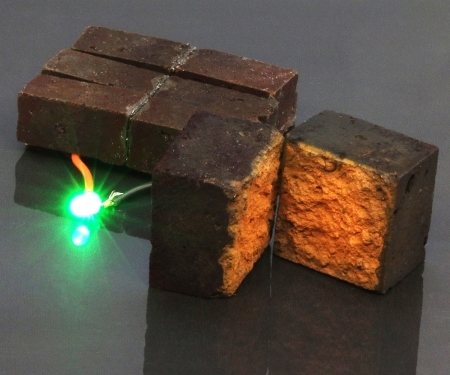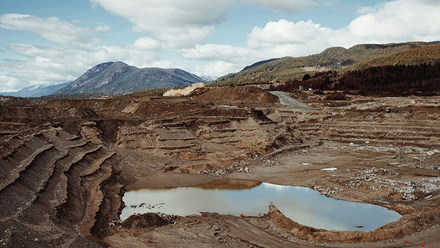Turning the humble brick into an energy storing device
Turning the humble red brick into a supercapacitor could be the way forward for energy storage.

Tapping into energy stored in your own walls sounds like something out of a sci-fi movie, but smart bricks could now be a reality thanks to a polymeric coating conceived by researchers at Washington University in St. Louis, USA.
Julio D’Arcy, Assistant Professor of Chemistry at the University, explains that the benefit of storing energy in clay bricks would be the minimal installation required. These supercapacitors would use water to store energy, limiting the fire risk associated with lithium ion batteries.
This is achieved by growing a polymer coating out of the hematite present in the bricks. ‘The iron oxide serves as an ideal reactant precursor for our work – we convert it to a reactive form of iron – where ferric ions are liberated and able to serve as an oxidising agent. We flow vapour of a gas through the brick pores to carry out this work. Our approach uses the open porous microstructure in a brick, taking advantage of the native mineral composition in a brick, and combines heat and vapour in order to induce an oxidative radical polymerisation within the brick microstructure,’ D’Arcy says.
‘The outcome of our synthesis the deposition of a conducting polymer known as PEDOT…Our polymer is embedded and grafted within the porous microstructure. This results in a conformal polymer coating that mimics the brick structure and which enhances its functionality, rendering it electroactive and able to store energy,’ he adds.
He emphasises that the coating will not peel off as it grows out of the hematite, meaning it is part of its structure, making it an ideal coating.
He continues, ‘When we apply an electrical potential using a solar cell, you can induce a positive potential on one brick by connecting it with wires to the solar cell. At the same time, another brick is exposed to negative potential and when you put these two polarised bricks together, you have developed a potential gradient that in essence is what allows you to make electrons travel in what we know as electricity.’
The bricks were tested using galvanostats and potentiostats – instruments that determine capacity and energy-storing capabilities over time.
According to the team, a device that is recharged once per day could last 30 years. And if using solar cells, a wall of 50 bricks can be recharged in 13 minutes. ‘This process can be carried out 10,000 times and the bricks continue to store energy,’ D’Arcy shares.
He adds that any bricks can be used, old and new, but that old ones might work slightly better as they are more porous – but that would require taking the bricks out and back in again which would be more costly.
Currently at lab-stage, D’Arcy explains that the process is scalable and that they have successfully coated larger pieces of the brick they cut with a diamond saw with the same effectiveness.
He adds that for large-scale roll-out, the energy density of the bricks needs to be increased. ‘At this moment this work is a proof-of-concept with the potential to be transformative within the next five years.’







